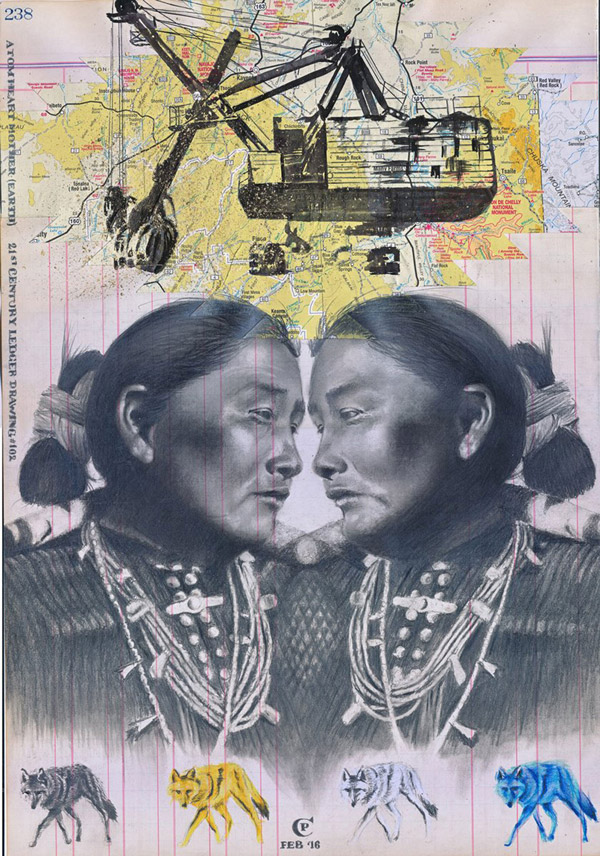Audio Stop 737

mixed media on ledger, Courtesy of Travois © Chris Pappan
Chris Pappan (Kanza/Lakota)
Atom Heart Mother (Earth), 2016
Read full audio transcript
NARRATOR:
Chris Pappan is a Kaw and Lakota artist living in Chicago. His work incorporates drawing, painting, collage, and found materials.
CHRIS PAPPAN:
What we’re looking at is an image of a Navajo girl who has been duplicated or mirrored and is kind of looking at herself. And in the background there is large machinery extracting uranium, and that’s a huge issue on the Navajo reservation. I didn’t grow up on the Navajo reservation, but I grew up right next to it. And as a young person it was basically my exposure to Native American people and culture – even though it wasn’t my own. I had to discover who my people were and my own culture through my artwork later on in life.
NARRATOR:
Pappan’s journey of discovery received a boost when he came upon some ledger paper while working in an art gallery.
CP:
Historically, the Plains peoples told stories through paintings which were done usually on the outside of the teepees or on clothing. But when America was expanding westward in the early to mid-1800s, paper was introduced to the Plains tribes through the ledger books of merchants and soldiers.
So any of the artwork that was being done on teepees and clothing was then done on that paper and became known as ledger art. And then later on as our people were put into prison camps and on reservations, then it became very important as a way to visually record the way of life that had been destroyed.
NARRATOR:
Pappan started using the paper to create his own form of ledger art – recording his unique journey and experiences. In this piece, for example, he incorporates a map of the Navajo Nation as well as drawings of a coyote.
CP:
I tend to not follow the Plains visual style by being pictographic or quote unquote “flat.” I like to draw in a more realistic and sometimes surrealistic way. And then I use that to tell my own personal experience of a Native person in this country.